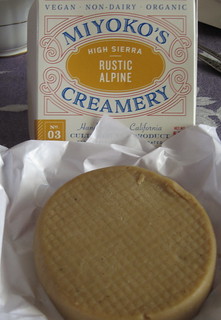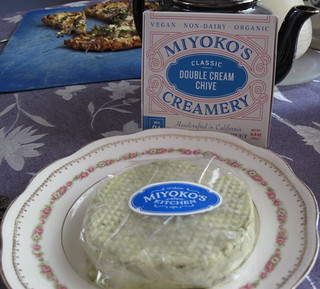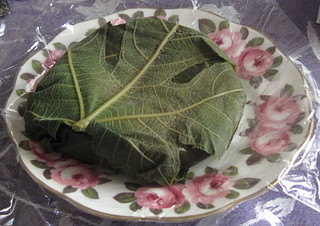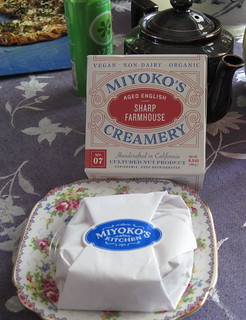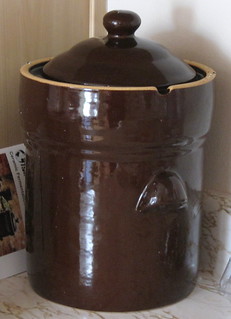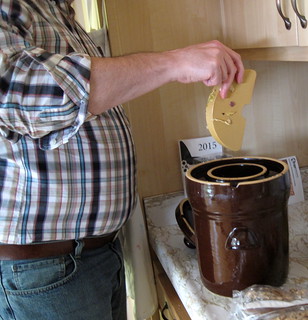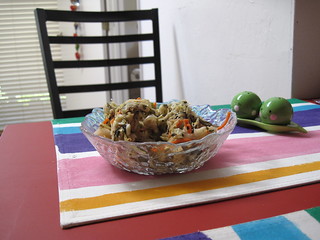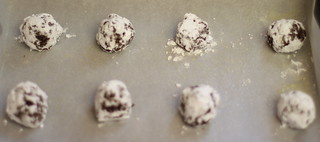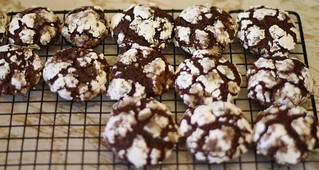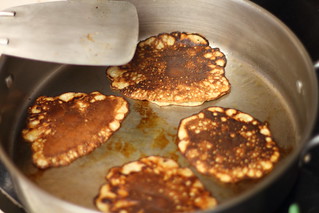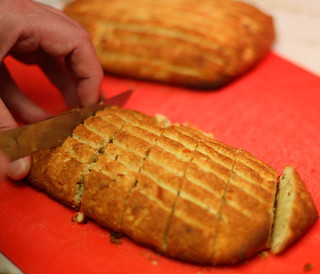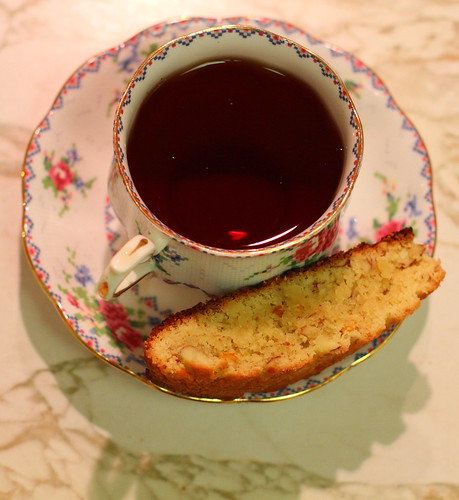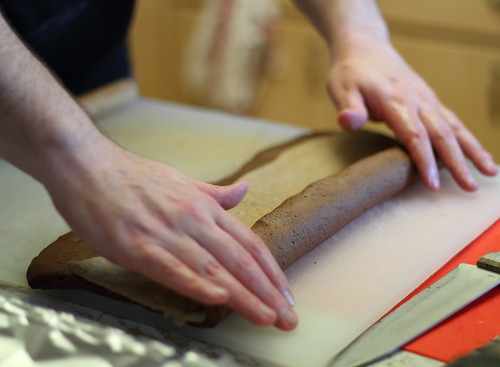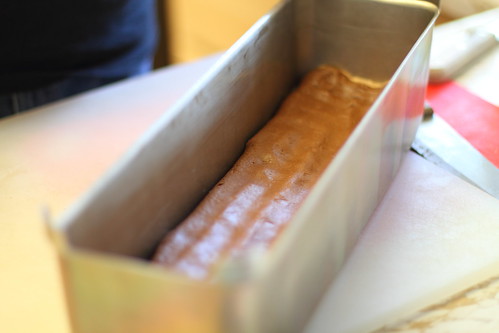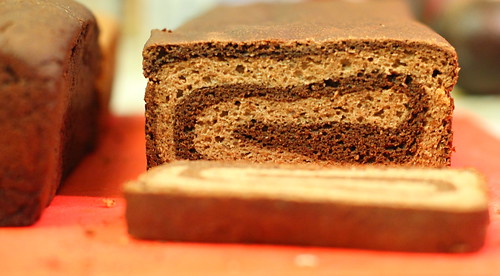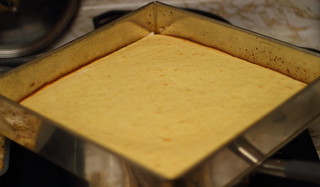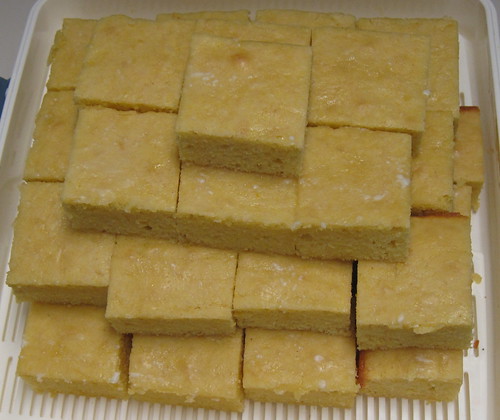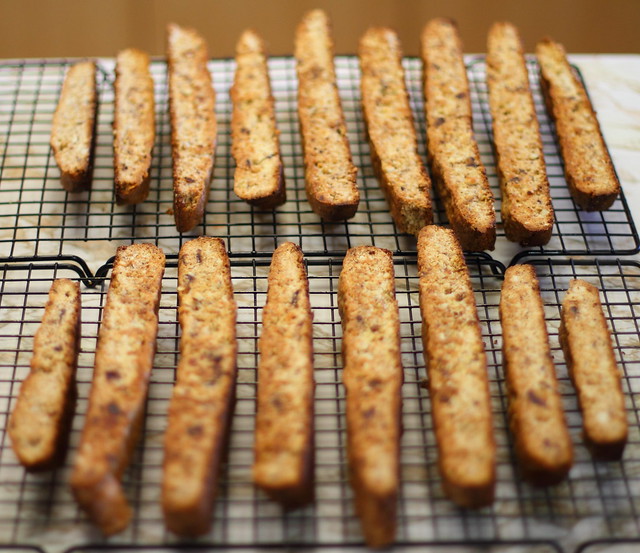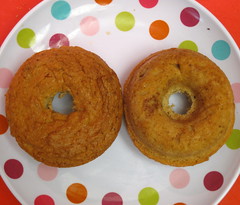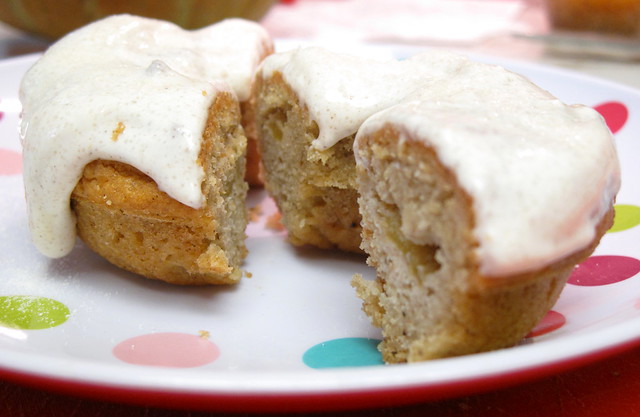Did you get the memo?
The words “artisan” and “vegan” go together. Well, they’re being seen together a lot more lately, anyway. Honestly, it was only a matter of time before vegans figured out the cheese thing, since it’s the excuse most of us use to stay not-vegan. We love our cheese. For those who desire to switch to a solely plant-based diet, the siren-call of cheese can be really, seriously, awfully HARD to resist, so vegans have for a long time been motivated. Of course, there have been, and there remain, myriad vile concoctions as a result of that motivation, horrific things which masquerade as cheese. Probably everyone has their story of struggling through plastic-y sandwich additions, crunchily textured things made out of rice milk (WHY?) and bright orange “chezie” sauce on pasta (sometimes this can be really good – T’s baby sister makes an amazing mac-and-cheez. But, not everyone has the knack.), but this isn’t a story about someone’s putting out a substandard product. This is a story of a product cheeses which was welcomed by vegans, vegetarians and omnivores alike. It was kind of shocking.
Miyoko Schinner is a longtime Bay Area vegan who wrote several cookbooks, including one in 2012, detailing her at-home success in making cultured vegan nut products. But, though many people bought the book, they were too timid to try cooking with unusual ingredients such as carrageenan powder, xanthan gum, tapioca flour, and agar powder. Not only that, but people had to come to grips with stuff like rejuvelac (what?) and the idea that culturing anything – dairy or non-dairy – is a process that is open to the vagaries of chance, as well as time-consuming. Laziness won out again, and after a lot of whining from friends and family, Miyoko opened Miyoko’s Creamery… which now ships to all fifty states, has a contract with the Whole Foods Markets and is still expanding as we speak.
We sat down for our family “Wine & Cheese” Tasting last week with a chilled bottle of Draper Valley Riesling grape juice – from an absolutely fabulous company which produces only unsulphured bottled grape juices, which means everyone can partake – and four of Miyoko’s Creamery cheeses (and, we’re just going to say “cheeses,” because “cultured nut products” makes us want to belt someone, and we refuse to type that umpteen million times). The cheeses are plastic-wrapped and then boxed for freshness, and before tasting, T. set them out for about forty-five minutes, to make sure we lost none of the flavors due to cold. (We don’t advise more than ten minutes in the summertime, however! The Double Cream got very soft.) There are ten “root” varieties of cheese, and then there are seasonal variations. We chose the Aged English Farmhouse cheese, the High Sierra Rustic Alpine, the Fresh Loire Valley in a Fig Leaf, and the Classic Double-Cream Chive. In the interest of taking good first impressions and comparing and contrasting, we ate the cheese on thin crispy, crackers containing no spices, passing the plate along the table and comparing flavor and texture, smell and noting anything else which caught our attention.
We began with the High Sierra Rustic Alpine cheese, which had a thick, creamy texture that was almost not spreadable – a paté consistency. It could be described as “semi-hard.” In color, it is a light tan all the way through. Its ingredients list Organic Cashews, Filtered Water, Organic Coconut Oil, Organic Chickpea Miso (Organic Chickpeas, Organic Rice Koji, Sea Salt, Water, Koji Spores), Sea Salt, Nutritional Yeast, and Cultures. We notice that nowhere on the list is listed liquid smoke, but… there’s… something slightly – very slightly – smoky about this cheese. This comes, perhaps, from the combination of nutritional yeast and miso? Anyway, the smooth and mild spread left a nicely savory finish on the tongue, and was …tasty. It wasn’t T’s favorite, but T’s mother thought it was wonderful and went back to it again and again. (Of course, this became her pattern with ALL of the cheeses throughout the night. But, more on that later.)
Interestingly, the ingredient list for the second cheese we tried is identical to the first, and yet, could two cheeses be any more diverse? The Classic Double Cream Chive was very nearly T’s favorite, with its creamy, mild, buttery flavor and the lovely hint of chive. In color, it is a creamy white, with bits of green which are the chives. This was enthusiastically received, and T. imagined it on baked potatoes, immediately. And then on toast. And then on peppered water crackers… Despite the miso and nutritional yeast still present in this cheese, the overwhelming flavor is mildly herb-y and buttery — like a nice Gournay cheese like Boursin. T’s mother returned to this cheese as well, as it’s very creamy and moreish, as our Scots friends would say. Another plus? It a cheese that is definitely easy to get kids to eat. Our youngest taster, Elf, is eight, and informed us that it is indeed a very good cheese, and he’s quite the omnivore and picky as all heck. An excellent result!
Not surprisingly, because T. loved it so much, D. just… shrugged. “It’s fine, it’s tasty enough,” is no ringing endorsement, so we will just ignore him, and move on. AHEM.
The next cheese T. wasn’t too sure about at all – because she’s not that fond of fruit in cheese, and not always at all fond of certain varietals of figs. Fortunately, she needn’t have worried; the ingredient list remained the same with this cheese, which meant the fig leaf – wine-cured – was only on the outside, and had nothing to do with the product INSIDE. The manufacturer has made a note that the shelf-life of this particular cheese is sixty days. As none of our other cheeses had this note, we figured it was there because of the leaves, which introduces another biological element into something cultured and aged.
While T. wasn’t sure she’d be wild about this cheese, this one D. managed to hoard and keep right in front of him on the table. Its sharpness and decidedly tangy, savory flavor may have been the reason for this. In color, this product is creamy white and the leaf only discolors the surface a very little bit. The manufacturer advises that this cheese grows more sharp as it ages. Of all the cheeses we tried T. liked this one least, and D. liked this one best. Elf was indifferent and T’s mother tried it once or twice, and remained enthused.
(The photographer must apologize for not unwrapping a couple of the cheeses; social occasions with a lot of giggling and genial insults and cheese-snatching across the table are not the best times to remember to properly photograph the food on one’s plate. Look! You can just admire the wonderfully sweet tea roses or the quirky cross-stitch pattern on the plates! There. All better.)
The final cheese was a second choice; we’d intended to sample the Smoked English Sharp Farmhouse, but it is apparently wildly popular and goes quickly out of stock from week to week. We settled instead for the Aged English Sharp Farmhouse, and were nonetheless thrilled. It is a firm, light tan cheese with a tangy flavor reminiscent of cheddar, and would have paired nicely with a Draper Valley verjus, the tangy, tart vintner’s brew made of unripened grapes. We all immediately imagined this melted – and it does melt – into a pasta sauce. This was Elf’s hands-down …tied favorite. Flea’s hands-down main favorite, T’s mother’s favorite, just because they all were, D’s second favorite, and T’s favorite. While we tried to remind ourselves that we were just TASTING, this cheese barely made it to be wrapped up and sent out the door to T’s parent’s house. Given time, it would have been completely snarfed down. The ingredients for this farmhouse were the same as with all of the other cheeses, yet this astonishingly tasted nothing like them. At all.
…which is really not so surprising. ALL cheeses in the dairy section are, at their root, made of … milk, salt, and enzymes, added with time. What gives cheese its flavor differentiation? The culturing process. The time. Owing to that simplicity, you might having a niggling interest in buying that cookbook and seeing how hard it would be to produce your own cultured nut products (!) at home. Or, if you’re not as time-rich as that, you could pop over to the website and see what else you’ve missed. The Country Style Herbes de Provence? The Double Cream Sundried Tomato & Garlic? The French Winter Truffle, or the Mt. Vesuvius Black Ash?
We bought these cheeses to share a social experience with vegans who don’t often get to have wine & cheese parties (okay, not gonna lie; people who don’t drink also don’t have wine and cheese parties, but we’ll ignore that), and came away sort of gobsmacked and perfectly willing to buy and consume these products our own non-vegan selves. There are still plenty of vegan “pitfalls” out there in terms of faux cheese products — but this carefully handcrafted, artisan “cultured nut product?” Is not one of them.
